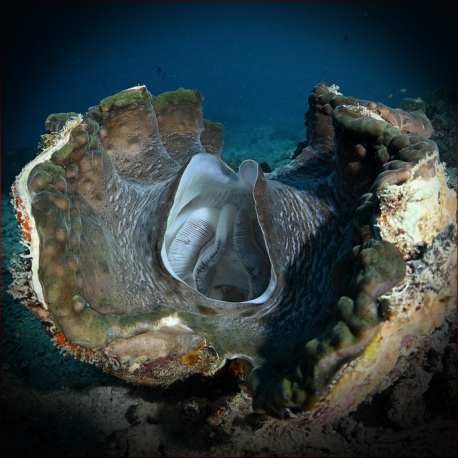More info
Datasheet
| Minimum Tank Size | 500 litres / 132.09 US gallons |
| Maximum Size | 130.0cm / 51.18inches |
| Reef Compatible | Always reef safe |
| Temperament | Peaceful |
| Temperature | 22.2°C / 71.96°F - 25.6°C / 78.08°F |
| Specific Gravity | 1.020-1.025 |
| Carbonate Hardness | 8-12 |
| pH | 8.1-8.4 |
General Description
Tridacna gigas, also known as the Giant clam, is the largest of the giant clams and does not require bright illumination. It can be placed on sand, coral rubble, or rocks.
Aquarium Suitability
Suitable with care, this species demands a high water quality, including proper oxygenation. They are peaceful in temperament and always reef safe.
Demands, Care, and Hardiness
Giant clams in the Tridacninae family are easy to keep with powerful lighting and good water quality. Maintaining a calcium level between 400 and 440 ppm is essential for shell development. Small clams require a phytoplankton diet, while larger specimens mostly rely on photosynthesis, benefitting from phytoplankton supplements. Watch out for pyramid snails targeting clams and consider using Wrasses to control them. Proper placement in the aquarium is crucial to avoid damaging the clam's foot. Tridacna gigas is of average hardiness and can grow up to 130 cm.
Reef Suitability
Always reef safe, the Giant clam is a peaceful addition to reef aquariums.
Aquarium Setup
To accommodate a Tridacna gigas, a tank of at least 500 liters is recommended, with stable water conditions including a temperature range of 22.2-25.6°C, pH of 8.1-8.4, a specific gravity of 1.020-1.025, and a carbonate hardness (KH) of 8-12.
Behavior
Tridacna gigas clams will attach themselves to rocks or sand over time and react to shadows by retracting. Keeping an eye out for any abnormalities in behavior can indicate the health of the specimen.
Feeding and Diet
Small clams need phytoplankton initially, while larger ones derive nutrition mainly from photosynthesis but benefit from supplemental phytoplankton.
Dimorphism and Captive Reproduction
Tridacna gigas can be bred in captivity, making it possible to find captive-bred specimens in local fish stores.
Habitat and Distribution
Found in the East Indian Ocean, Australia, Indonesia, and the Central/West Pacific regions, Tridacna gigas inhabits a variety of marine environments.

